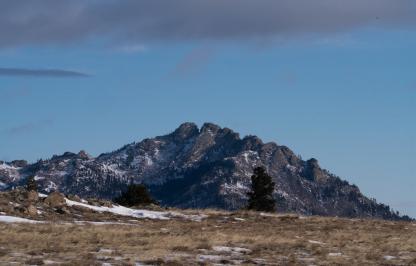The Wyoming Game and Fish Department has verified the presence of Asian clams, an aquatic invasive species, in Glendo Reservoir. Game and Fish confirmed the discovery in early September. Asian clams have been found in Wyoming before, identified in nearby Guernsey Reservoir in 2019 and the North Platte River in 2014.
“We're disappointed to verify the presence of Asian clams in Glendo,” said Eric Hansen, Casper Region AIS specialist. “This is not surprising as they are established just downstream, but it is unfortunate as it highlights how AIS continues to move within the state. We urge boaters to follow the law — Clean, Drain and Dry your watercraft after every use and stop at watercraft inspection stations.”
There are no changes for boaters or other water users at Glendo.
Asian clams are native to Asia, Africa, the Mediterranean and Australia and are believed to have been introduced intentionally as food or incidentally imported with the Pacific oyster. The AIS was initially discovered in 1938 in the Columbia River and is now in 47 states.
In Wyoming, Asian clams are present in Guernsey Reservoir and the North Platte River downstream, the Fort Laramie irrigation canal, the Laramie River below Grayrocks Reservoir, Keyhole Reservoir and Horse Creek. A map is available on the Game and Fish website.
“Asian clams can spread easily and outcompete native organisms,” said Alan Osterland, chief of fisheries for Game and Fish. “Even though they have been found in Wyoming before, any spread of AIS is troubling because of the potential to change the current ecosystem.”
The discovery of Asian clams in Glendo underscores the department’s concern that zebra mussels could enter Wyoming, easily spread and cause damage to ecosystems and infrastructure. This year, zebra mussels were found in Pactola Reservoir in the Black Hills of South Dakota and Highline Lake near Loma, Colorado. These confirmations are the closest zebra mussels have been to Wyoming. To date, Game and Fish has not found zebra or quagga mussels in any of the state’s waters.
“The threat of zebra mussels to Wyoming is real and impacts to our state and boaters will be big, if found,” Osterland said.
The department’s watercraft inspection stations have been busy all summer, and Game and Fish inspectors are seeing more AIS coming through on boats statewide.
“We have been decontaminating each boat entering from South Dakota as well as any boats coming from a high-risk water. We’re taking the movement of zebra mussels incredibly seriously. If they get into our state, they can spread — evident by what we see here with Asian clams,” said Josh Leonard, AIS coordinator for Game and Fish.
It is required that any watercraft transported into Wyoming from March 1-Nov. 30 undergo a mandatory inspection by an authorized inspector prior to launching. Also, boats must stop at established check stations within the state each time a boater passes one.
“These stops are designed to stop the spread of AIS. It’s the law to stop — and it's a small sacrifice of time to ensure the waters you like to visit remain AIS free and without restrictions for recreation,” Leonard said.
Game and Fish has rapid response plans in place if zebra or quagga mussels are discovered in Wyoming’s highest-recreation waters which includes measures like closing boat ramps and requiring inspections before launching. To see those plans and the most recent information on Wyoming AIS visit the Game and Fish website.
Asian clams confirmed in Glendo Reservoir
Sara DiRienzo, Public Information Officer - (sara.dirienzo@wyo.gov)

